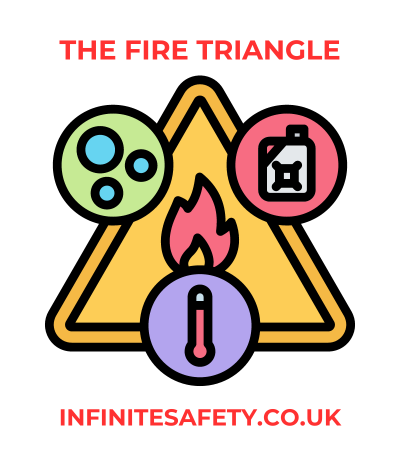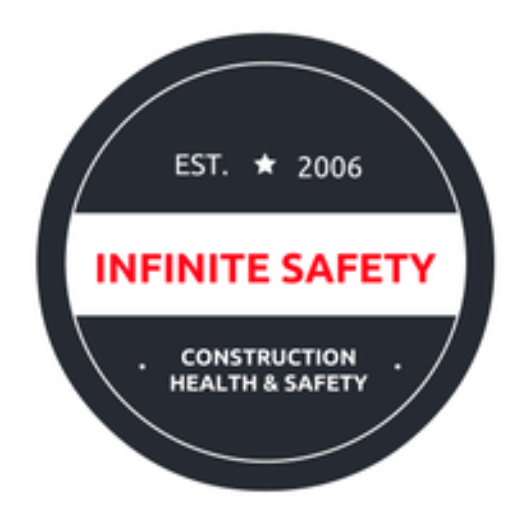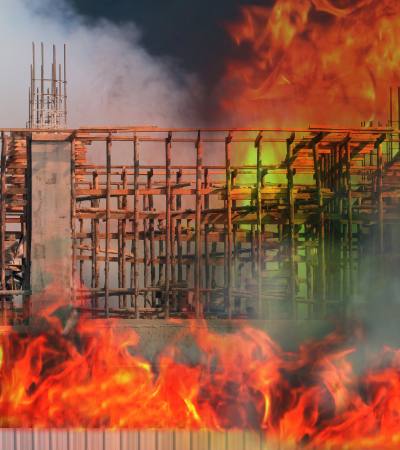A fire risk assessment for construction site operations are a requirement to comply with the Joint Code of Practice for Fire Prevention on Construction Sites.
How to Do a Fire Risk Assessment for a Construction Site
Firstly, identify the risks. Remember the fire triangle?

- Fuel
- Heat
- Oxygen
A fire cannot occur unless all three things are present.
Identify your fuel sources on site. I’ll help you out, it will be your diesel bowser, fuel tanks and propane bottles but look around for more sources.
Next, identify what could ignite that fuel. Heaters, discarded lit cigarettes or sparks can ignite a fire.
A relatively new source of fire on a construction site are disposable vapes. The batteries in vapes can ignite. Most skip companies provide boxes for vapes to be put in so they can handle them appropriately.
Factor in oxygen bottles on site if you have them therefore consider oxyacetylene welders in your fire risk assessment.
If you want to cut to the chase and buy a blank Fire Risk Assessment form for Construction Sites, please click this link. Full instructions and a worked example are included along with your, easy to use, multiple choice, template. The file can be used in MS Word or Google Docs.
Fuel and Ignition Sources Identified – What Next?
Fire Risk Assessments are much like any other risk assessment and the severity and likelihood must be calculated.
Once you have this, you can decide on the control measures needed to reduce the likelihood of the fire starting. Then move onto reducing the severity of the fire if it does occur.
Fire points on site are essential and the location of them can be critical. Extinguishers need to be full and regularly checked as do escape routes. Consider escape routes from scaffolding, as the boards of the working platform could be fuel for the fire.
One Assessment is Not Enough
A construction site changes quickly during the project therefore the risk assessment undertaken at the start of the job will not be relevant after a few months.
Re-assess the fire risk to include any new sources of fuel – hot works, timber and scaffolding.
Routine construction site inspections should check that the fire risk assessment for the construction site is up to date.

